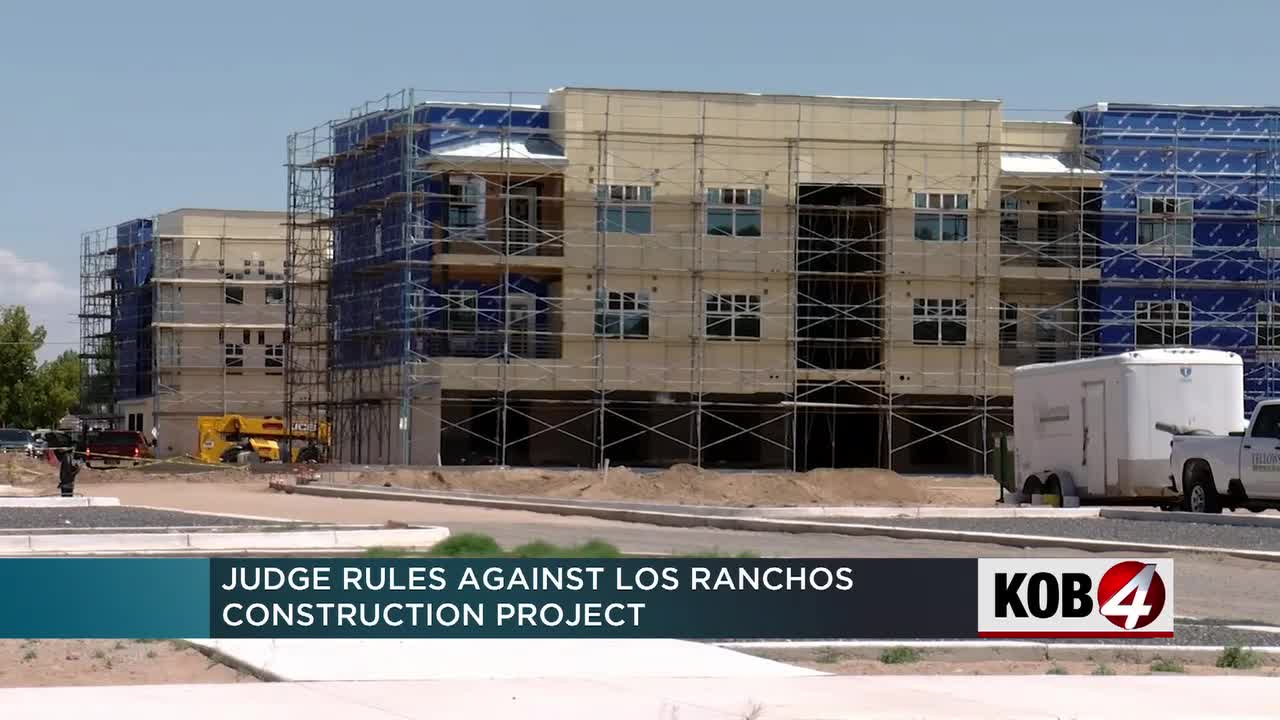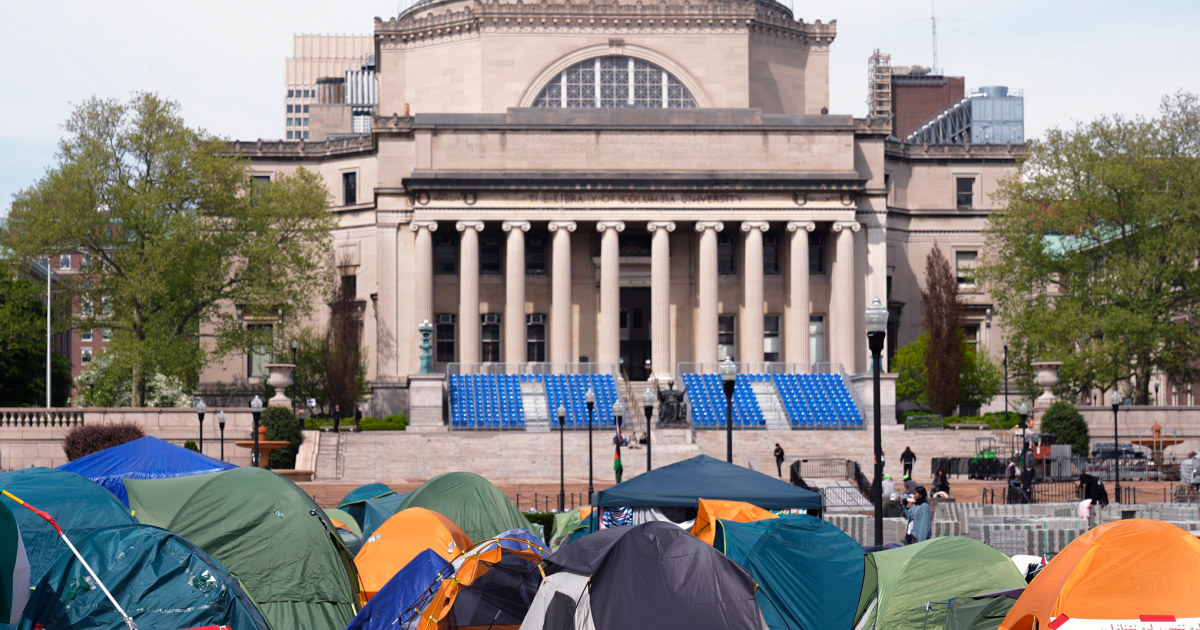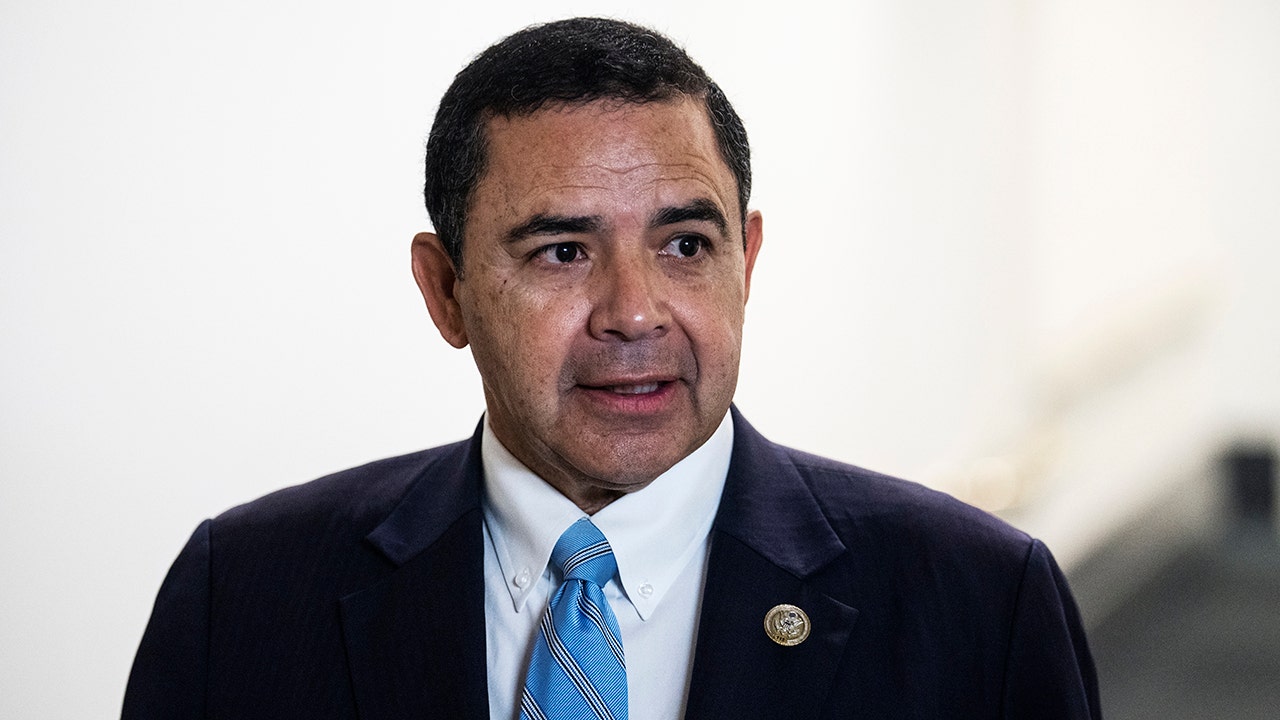New Mexico
An off-the-grid community in New Mexico offers insight into sustainable building

ABC News is taking a look at solutions for issues related to climate change and the environment with the series, “The Power of Us: People, The Climate, and Our Future.”
Near the Sangre de Cristo Mountains in Taos, New Mexico, a community built into the earth is living totally off-the-grid in mostly-recycled structures called Earthships.
ABC News Chief Meteorologist and Chief Climate Correspondent Ginger Zee along with her team, Dan Manzo and Lindsey Griswold, traveled to Taos to stay with the community and find out what everyone can be doing to live a bit more sustainably.
“Everybody on the planet can wake up in the morning and be comfortable without fossil fuel. Everybody can grow food in their house, everybody can have electricity from the sun and wind,” Michael Reynolds, founder and creator of Earthship Biotecture, told Zee. “These buildings do that.”
Heating, cooling and powering buildings creates more greenhouse gas emissions than anything else in the U.S., according to the Environmental Protection Agency. Furthermore, construction and demolition create more than 500 million tons of debris each year in this country alone, the EPA said.
The community of over 100 Earthships in Taos is made of “living vessels” with gravel, old tires, concrete and other discarded materials like glass bottles.
Earthships are fully self-sustaining structures with timers for wifi and hot water use, according to Earthship Biotecture.
Reynolds said he uses rainwater four times over for different purposes in his home.
Michael Reynolds talks with ABC News Chief Meteorologist and Chief Climate Correspondent Ginger Zee outside Taos, New Mexico.
ABC News
“I’m using five gallons — or three gallons of water to take a shower. That same three gallons of water waters my banana trees and my tomatoes,” Reynolds said. “That same three gallons of water is recollected to flush the toilet.”
Solar energy provides the homes with power, but it’s not used to heat or cool the structures. Earthships use trash as insulation to keep them comfortable inside.
Reynolds showed ABC News how Earthships are insulated with old tires filled with dirt.
“Each tire gets about four or five wheelbarrows of dirt pounded into them. So they’re basically like steel encased Adobe bricks,” Earthship Biotecture rental manager Hillary Hess told ABC News. “And the sun comes in and it hits that mass. And then the tire retains it. And as the temperature in here would drop, that heat would be released.”
“You know, on a cold February night, you walk in one of these and you go, ‘This is amazing.’” Reynolds said. “This is warm and it’s freezing outside and there’s no heating system here. So if you’ve put people in a position to be able to experience it, then that’s huge.”
An ABC News team stayed in one of the structures in Taos for three days to understand how they work and what it feels like to live in one.
Hess said structure the team would be staying in is 5,400 square feet. Two thousand square feet of that is dedicated growing space.

Outside Taos, New Mexico, a community of Earthships offers off-the-grid living claiming to be the answer to building sustainability.
ABC News
“In this house there’s two ponds in the greenhouse and we have tilapia out there,” she said. “So ideally, if you lived in this home, if you wanted, you could even be harvesting your own fish, chickens with eggs. And then you could catch a fish, pick your citrus, wrap it in a bag and leave and grill it out on the fire.”
Related Stories

The small percentage of people living in Earthships aren’t the only ones saying traditional living and building arrangements need to change.
“The building industry currently is known to account for approximately 40% of greenhouse gas emissions,” Lola Ben-Alon, assistant professor at Columbia University Graduate School of Architecture, Planning and Preservation told ABC News. “It’s a really huge chunk of our industry in the world.”
Ben-Alon said there’s no one answer as to what makes up the most sustainable home.
“There’s no one solution,” she said. “It’s really a combination of principles and a combination of design thinking with the local environment and what is available and what is the climatic context, but also the material availability context and the labor context.”
Reynolds believes the principles of Earthships can be applied everywhere.
“Not everybody’s going to have an Earthship tomorrow,” Zee said. “If there had to be one thing from Earthships that we could apply to homes across America, what would be the most important?

News Chief Meteorologist and Chief Climate Correspondent Ginger Zee sits with Earthship Biotecture founder and creator Michael Reynolds outside of an Earthship near Taos, New Mexico.
ABC News
“I think it starts with comfort,” Reynolds replied. “In other words, you can add a greenhouse on the south side of your house, and that will hit those rooms that are near that. You can even in New York City, you can get an apartment with south facing windows. You can become aware of the fact that heat comes from that thing, and you can catch that heat.”
In Santa Fe New Mexico Gov. Michelle Lujan Grisham talked with ABC News about Earthships and other sustainability efforts in the state
“How important is it to experiment with sustainability like that?” Zee asked. “Because that’s extreme.”
“I think all of that has incredible value,” Grisham said. “It is not the No. 1 investment in sustainable living, but it is really powerful.”
“Just their water reuse and recycling in its last place, after using it four times, is to grow food. I mean, these are particularly for states in the Southwest arid states,” she added. “That innovation and knowing that you can live completely off the grid and have sustainable building materials all recycled, we can do more of that.”
For his part, Reynolds said the extremity is necessary.
“I used to try to tone it down because I know that I’m a fanatic about it, and I can’t expect other people to understand what I’ve been thinking about for decades,” he said. “So I try to water it down and tone it down, but now it’s like, ‘yeah, it’s not appropriate to tone it down.’ I mean, the solutions are the way forward on this planet. It’s going to have to be extreme.”

New Mexico
Judge rules against Los Ranchos development project

It’s business as usual on 4th Street and Osuna as crews continue construction on a 12-acre multi-use center in Los Ranchos.
LOS RANCHOS, N.M. – It’s business as usual on 4th Street and Osuna as crews continue construction on a 12-acre multi-use center in Los Ranchos.
“In the face of the allegations of not complying with the law, and in the face of the planning and zoning commission that they shouldn’t be doing this, even today after the judge has ruled, they are still doing construction,” said Mel Eaves, who is a member of Friends of Los Ranchos.
However, some Los Ranchos residents say there is a lot more happening behind the scenes. Developers started construction in late 2022 which came as a surprise to many residents who say they never held the proper public meetings to get approval to break ground.
“Those procedures require public notice to the residents, and they require that decisions be made in open public meetings,” said Eaves.
Eaves is also a retired attorney and has helped Friends of Los Ranchos pursue legal action. He said when they noticed the construction they warned the Village leadership and developers that they were planning to pursue legal action if they did not follow procedure.
“During that time, we filed briefs, cited the law and told them we were opposed to it. They really didn’t pay any attention to us if anything I think they speeded the construction up,” he said.
More than a year later a district court judge has ruled that developers and village leadership did in fact violate the Open Meetings Act and none of the plans drawn up this far for the project are valid.
“All actions, all approvals previously done in violation of the law are invalid. That means they do not have valid authority to do what they are doing today,” said Eaves.
The victory for Los Ranchos residents is now dimmed as construction continues at the site. Eaves said they will continue to put pressure on new village leadership to put an end to it.
“The board of trustees and the mayor now have the authority and I say the duty, to go to district court and stop construction and to assess a penalty and they ultimately can ask the court to remove the construction,” Eaves said.
KOB 4 reached out to developers and Los Ranchos leadership about the judge’s ruling. They shared the following statement:
“We want a chance to review with Legal Council and the Board, the case finding and implications. We have a posted special meeting to get that understanding.”
They will have a closed meeting on Monday, May 6 to discuss their options moving forward.
New Mexico
New Mexico community college to launch quantum lab, workforce development | EdScoop

Central New Mexico Community College announced on Thursday that it will build a quantum science lab and develop a training boot camp as a means to bolster workforce needs in the field of quantum computing.
The new lab and workforce development program at the community college are supported by more than $800,000 in federal funding and through partnerships with Sandia National Laboratories and the University of New Mexico. The community college has deployed other “deep dive” bootcamps, which consist of 10-12 week courses focused on coding, data science, digital media and other technical areas.
“Quantum computing may seem like science fiction, but it is a reality and New Mexico will be a leading center for its practical applications across a multitude of fields,” said Kyle Lee, who leads workforce development programs at the college, in a press release. “We will be one of the first and most accessible programs to build out this exciting opportunity for individuals and companies who want to harness quantum systems’ extraordinary capabilities.”
Students will be able to learn about quantum computing processes through a 10-week boot camp program and leave with skills to build, operate, maintain quantum systems and enter the workforce, the release said. Brian Rashap, an instructor with the college’s workforce training program, said that the lab is projected to welcome its first cohort of students in spring 2025.
“There are very few formal quantum training programs like this, so it’s incredibly special that CNM is paving the way in that sense,” Rashap said. “We’re designing this program to serve employers and students in a really cutting-edge way, so if you’re interested in this kind of hands-on, innovative training this is the place to be.”
New Mexico
Currier: New Mexico officials on the right track in exploring water reuse
Water is New Mexico’s most precious resource. We must ensure it is conserved and utilized to the greatest extent and encourage innovative technologies that result in safe, responsible water reuse. As directed by the 2019 Produced Water Act, state officials are working diligently to create a framework for water reuse through the Water Quality Control Commission rulemaking.
All viable and safe options to address our declining water availability should be considered, including finding ways to safely use treated produced water. The oil and gas industry is truly one of the few industries capable of attaining “net positive” water balance by saving more fresh water than it uses. Achieving this is a win for all New Mexicans.
In New Mexico, oil and natural gas production uses less than 1 percent of the state’s annual freshwater consumption, while the vast majority of water continues to be consumed by individuals or other water-necessary industries.
Produced water is mostly naturally occurring, highly saline water brought to the surface as part of oil and gas production. Leading universities, like New Mexico State, New Mexico Tech, and Texas Tech, are on the forefront of treated produced water use research. Developments in water recycling technology show that high-quality water can be extracted from produced water for appropriate and regulated reuse. With additional treatment, the water can be cleaner than some natural river ecosystems.
Currently, produced water is injected back into deep subsurface formations as one of the few approved disposal methods. The reinjection of produced water can contribute to seismic events. Coupled with depleting water supplies, it is crucial to find ways to best utilize produced water.
Due to technological advancements, produced water could be used for industrial applications such as municipal landscaping, road construction, and irrigation for non-edible agriculture like cotton. To ensure its safe utilization in approved applications, the use of any produced water will be extensively tested and monitored to guarantee it meets stringent water-quality standards.
Every gallon of treated produced water used for irrigation or industrial uses frees up a gallon of native fresh water.
Concerns that the oil and gas industry introduces Per- and Polyfluoroalkyl Substances – or PFAS – into its produced water are unwarranted. To be clear, the oil and gas industry is not a source of PFAS in produced water. A recent study by the U.S. Geological Survey found PFAS concentrations in the Pecos River near Artesia (upstream of oil and gas fields) averaged 15 nanograms per liter. Water from the Pecos River downstream of oil and gas fields had the same or lower levels. The trace amounts of PFAS found in the surface water are introduced before water reaches the Permian Basin. The study also found PFAS levels in the Pecos River were lower than samples taken from the Rio Grande south of Albuquerque.
We urge state officials to make data- and science-based decisions in the upcoming WQCC rulemaking hearing to ensure proper utilization of all our water resources, preserve our limited supply of fresh water for future generations, and enable economic diversification. To learn more about the rulemaking and treated produced water facts, we urge you to visit NM Environment Department, the WQCC, NMSU, NMT, and TTU sites to learn more the safe usage of produced water and its benefits to New Mexico’s future.
Missi Currier is a Carlsbad native, and President and CEO of the New Mexico Oil and Gas Association.
-

 News1 week ago
News1 week agoLarry Webb’s deathbed confession solves 2000 cold case murder of Susan and Natasha Carter, 10, whose remains were found hours after he died
-

 News1 week ago
News1 week agoFirst cargo ship passes through new channel since Baltimore bridge collapse
-

 World1 week ago
World1 week agoHaiti Prime Minister Ariel Henry resigns, transitional council takes power
-

 World1 week ago
World1 week agoSpanish PM Pedro Sanchez suspends public duties to 'reflect'
-

 World1 week ago
World1 week agoUS secretly sent long-range ATACMS weapons to Ukraine
-

 Movie Reviews1 week ago
Movie Reviews1 week agoHumane (2024) – Movie Review
-

 News1 week ago
News1 week agoAmerican Airlines passenger alleges discrimination over use of first-class restroom
-

 Education1 week ago
Education1 week agoVideo: Johnson Condemns Pro-Palestinian Protests at Columbia University




















